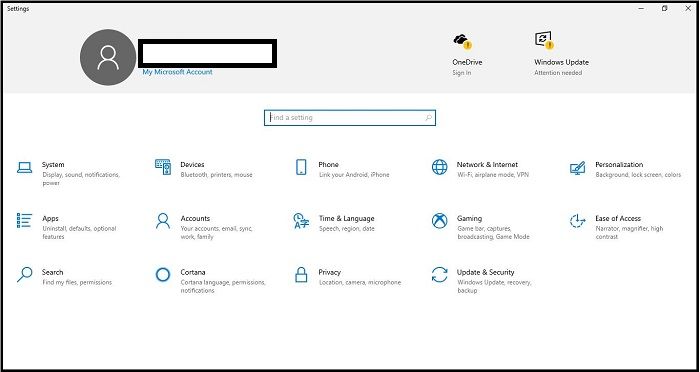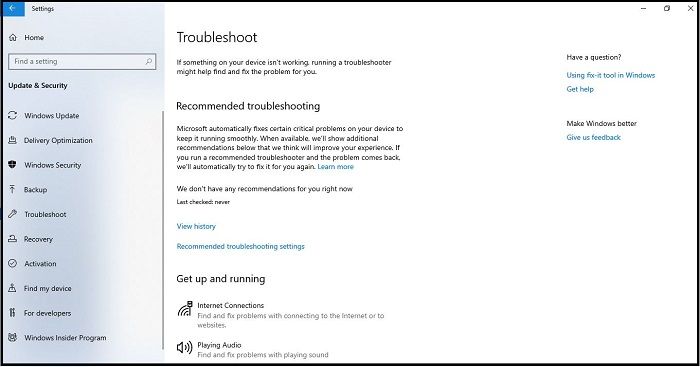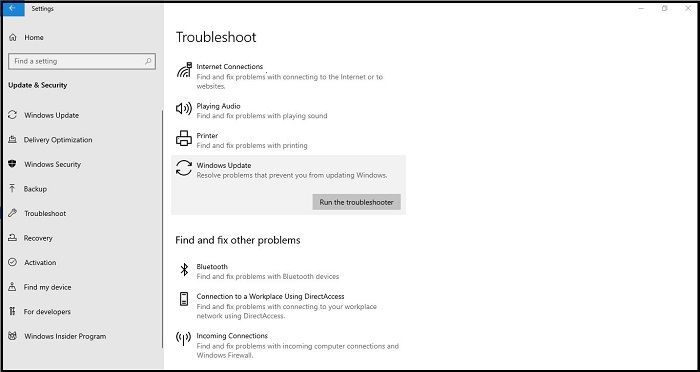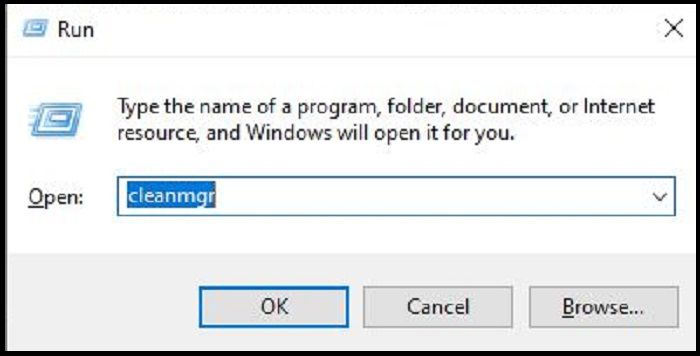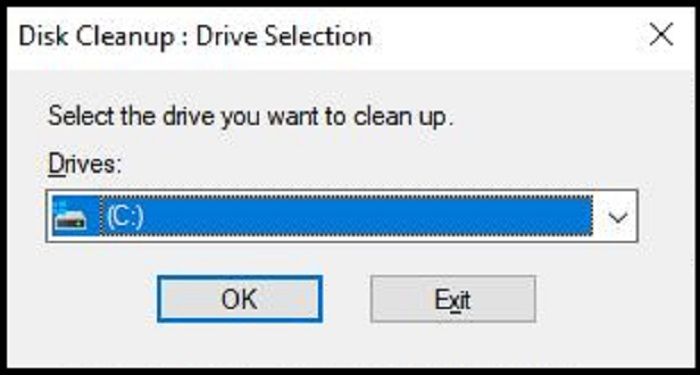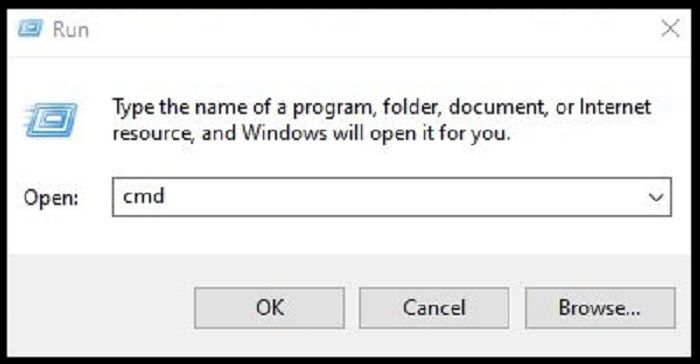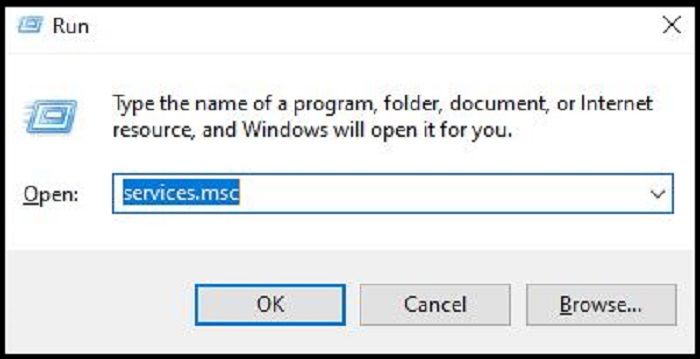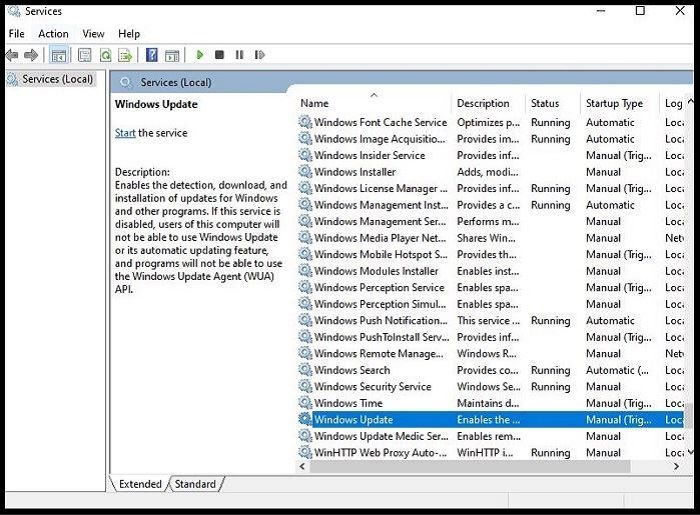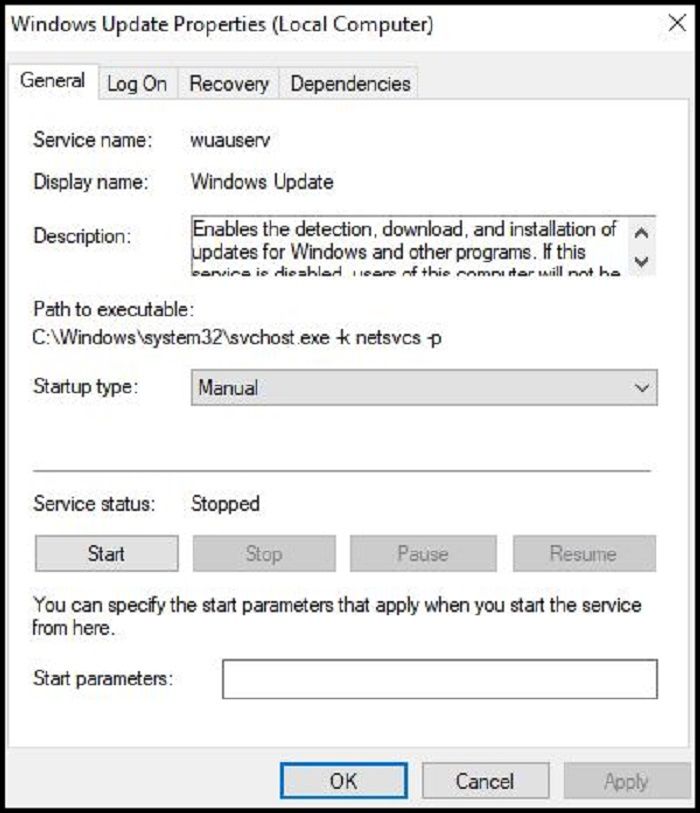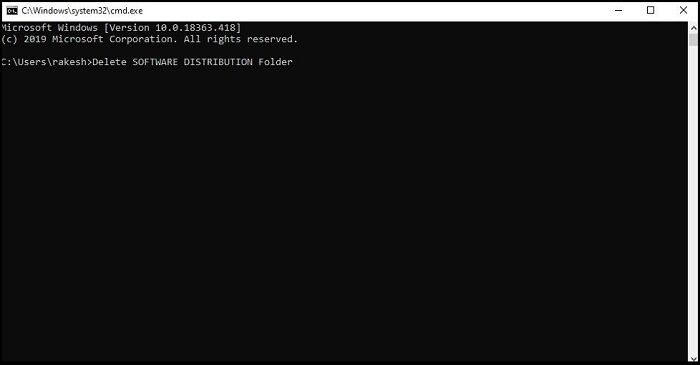Why Is Windows Update Not Installing
Have you ever wondered about the benefits of updating your Windows to the recently released versions? Windows update helps protect your system from potentially damaging software. Further, it helps quickly resolve general Windows bugs or issues while offering new features. But have you ever faced a Windows update not installing or a Windows update something went wrong problem?
Many reasons may lead to problems, like not installing recent updates. Some of these include:
- Windows update service problems. It is the leading Windows sever role offering planning, managing, and deploying different updates, hotfixes, and patches. So, any issues with the Windows update service may cause problems installing Windows updates.
- Outdated drivers. Windows systems require significant resources to install the new update. Hence, systems lacking compatible resources like network cards or graphic cards may cause issues in Windows update installation.
- System file problems. System files may get corrupted or accidentally deleted during regular operations. These problems with system files cause problems in installing Windows updates.
- Low disk space. Often, your system may not have significant space to accommodate new Windows updates. This low disk space may cause the Windows update not installing error.
- Third-party antivirus software. Many third-party antivirus software interfere with Windows 11's 22H2 update. Hence, it is important to disable real-time scanning of virus protection tools for PC.
So, does it mean that you need to abandon your system without a recent Windows update? There is no need to worry as it is a common problem that can be resolved independently.
🔥Read More: Windows Update Cannot Currently Check for Updates
If you are facing the Windows 10 cumulative update failed to install error, this post is written for you.

Windows 10 Cumulative Update Failed to Install & Download
This article discusses 6 ways to fix the Windows 10 cumulative update failed to install error and offeres a tool to protect your data. Read more >>
6 Ways to Fix Windows Update Not Installing
After going through the top reasons and other details for the Windows update not working or installing error, it is time to go through the fixes. So, below are the tested solutions to install Windows updates quickly on your system:
- Fix 1. Run Windows Update Troubleshooter
- Fix 2. Clean Up Disk Space
- Fix 3. Run System File Scan
- Fix 4. Restart Windows Updates Services
- Fix 5. Delete SOFTWARE DISTRIBUTION Folder
- Fix 6. Turn Off Third-party Antivirus Programs
Fix 1. Run Windows Update Troubleshooter
What else to trust in solving any Windows system problem than running the Windows update troubleshooter? The quick steps to run the troubleshooter mode are as follows:
Step 1: Open the "Settings" option on your Windows system.
Step 2: Select the "Update & Security" option.
Step 3: Select the "Troubleshoot" option from the left navigation pane.
Step 4: Then select the "Additional Troubleshooters" option.
Step 5: Now, click on the "Windows Update" option.
Step 6: Select the "Run the troubleshooter" option.
Step 7: Wait until the Windows update troubleshooter detects and fixes the problem.
Fix 2. Clean Up Disk Space
It is important to clean up disk space if you've less than 16 GB for a 32-bit operating system and 20 GB for a 64-bit operating system. If you don't have the required disk space, you only need to clean up your disk space. The quick steps for the same are:
Step 1: Press "Windows + R" to open the Run box.
Step 2: Enter the "cleanmgr" in the typing box and then press enter.
Step 3: Select the drive for clean up and then press "OK".
Step 4: Select the items from the list and then press "OK".
Step 5: Once completed, try to install the Windows update.
Fix 3. Run System File Scan
The system file scan helps solve the problem of system file corruption, causing problems with Windows updates. It is easy to run the system file scan using the Command Prompt option. The detailed steps to run a system file scan are as follows:
Step 1: Press "Windows + S" to open the file search tool.
Step 2: Type "cmd" in the text box and open the "Command Prompt" option.
Step 3: Right-click and select the "Run as administrator" option.
Step 4: Enter the command- DISM.exe /Online /Cleanup-image /Restorehealth and then press enter.
Step 5: Run the SFC tool by typing sfc /scannow and then press return.
Step 6: Wait until the SFC scan shows the result message in the Command Prompt.
Fix 4. Restart Windows Updates Services
Any issues with the Windows Updates Services prevent the successful installation of Windows updates. Further, the Cryptographic Service and Background Intelligent Transfer Service should be running properly. So, the quick steps to restart Windows Updates Services are:
Step 1: Press "Windows + R" to open the dialog box.
Step 2: Enter "services. msc" in the typing box and press "Enter". The services page will open.
Step 3: Find the "Windows Update" option and select its properties.
Step 4: Check the "Service Status" option, which should only be in the "Start" mode. Further, you must keep the "Startup type" to "Automatic."
Step 5: Once completed, press "OK."
Step 6: You can repeat the same process for the Cryptographic Service and Background Intelligent Transfer Services.
Fix 5. Delete SOFTWARE DISTRIBUTION Folder
The Software Distribution folder stores all Windows configuration and updates files. Any problem in downloading the Windows update may cause issues in these files. So, you only need to delete all Software Distribution files and download the latest files. The detailed steps for the same are:
Step 1: Open File Explorer on your Windows system.
Step 2: Copy and paste the following command C: \Windows\SoftwareDistribution and press enter.
Step 3: Select all the files and press the "Delete" button.
Step 4: Download the latest available updates from the "Updates & Security" option in your system settings menu.
Fix 6. Turn Off Third-party Antivirus Programs
Last but not least is the mistaken interference of the third-party antivirus programs in installing Windows updates. All you need to do is turn off any active third-party antivirus program on your system. The quick steps for the same are:
Step 1: Go to the third-party antivirus program icon.
Step 2: Right-click on the icon and select the "Uninstall" option.
Step 3: Once it is uninstalled from your system, restart it and download the Windows update.
Step 4: Wait until the Windows update is successfully installed.
Bonus Tip: Backup your Computer After Fixing the Issue
After learning about the detailed fixes for the Windows update not installing problem, it is great to back up your computer. Creating a system backup helps protect against potential data loss. So, can you create your system backup individually at your place only? The answer is a big yes to using EaseUS Todo Backup Home.
Secure Download
EaseUS Todo Backup Home is a comprehensive tool for backup and recovery for Windows 7/8/ 10/11. It allows you to back up your system, file, disk, partition, computer app, etc. And it enables you to perform different backup types, such as full, incremental and differential backups, and store the backup in various locations.
In addition, it lets you create an image of an SD card and an iso image of a hard disk. Most importantly, you can enjoy 250G cloud storage for free and compress a backup for saving space.
Here is how to back up your computer using this backup tool.
Step 1. Launch EaseUS Todo Backup on your computer, and click Create Backup on the home screen and then hit the big question mark to select backup contents.

Step 2. To back up your Windows operating system, click "OS" to begin the backup task.

Step 3. Your Windows operating system information and all system related files and partitions will be automatically selected so you don't need to do any manual selection at this step. Next, you'll need to choose a location to save the system image backup by clicking the illustrated area.

Step 4. The backup location can be another local drive on your computer, an external hard drive, network, cloud or NAS. Generally, we recommend you use an external physical drive or cloud to preserve the system backup files.

Step 5. Customiztion settings like enabling an automatic backup schedule in daily, weekly, monthly, or upon an event, and making a differential and incremental backup are available in the Options button if you're interested. Click "Backup Now", and the Windows system backup process will begin. The completed backup task will display on the left side in a card style.
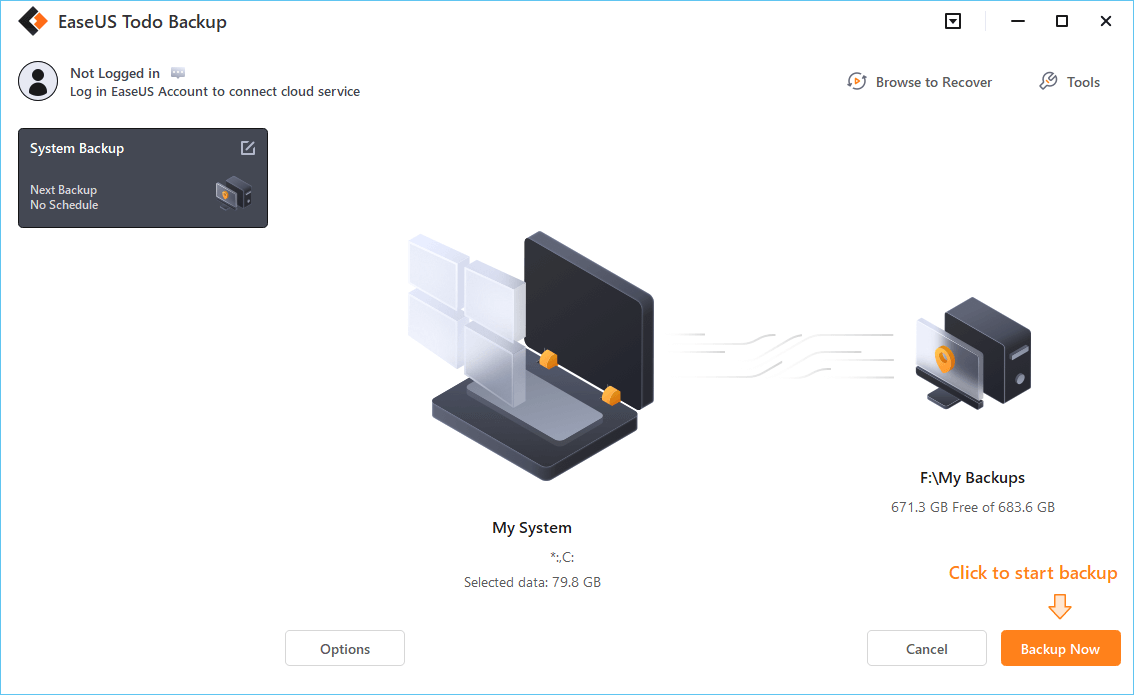
The Bottom Line
Hence, it is easy to understand the Windows update not installing error in detail. It can be due to different reasons, like Windows Update service issues, corrupted system files, and outdated drivers. It becomes easy to apply the different fixes mentioned above.
All you need to do is run a Windows update troubleshooter, disk space cleaning, or run a system scan. Further, you can delete the SOFTWARE DISTRIBUTION folder and turn off third-party antivirus programs. Not to miss is going for a quick system backup using EaseUS Todo Backup Home. It is a comprehensive backup solution for data protection. Just download and try it.
Secure Download
FAQs on Windows Updates Not Installing
1. Why do updates fail to install?
Different reasons may cause updates failing to install on your system. Some of the top reasons are:
- Issues with the Windows Update service
- Outdated drivers cause a lack of compatible resources like network cards or graphic cards.
- Corrupted or deleted system files causing Windows updates fail to start.
2. How long does it take to install Windows 10 update 21H1?
It is easy for Windows 10 2004 or 20H2 users to update to the 21H1 version. The time taken to install Windows 10 update 21H1 depends on the size and type of the system storage. Systems with solid-state storage may take around 10 to 20 minutes to install Windows 10 update 21H1. Further, systems with traditional hard drives may take significant time.
3. How do I know if I have a 21H2 update?
The steps to check if you have a 21H2 update on your system are as follows:
Step 1: Go to the "Settings" option on your system.
Step 2: Select the "About" option.
Step 3: Go to the "Windows specifications" option.
Step 4: Confirm if the "Version" option reads "21H2" and the "OS build" number option reads 19044.
4. What happens if I turn off my computer while updating?
It is recommended not to turn off your computer while updating for several reasons. It may cause your data to get corrupted or system failure. Hence, it causes serious damage to your system.
Was This Page Helpful?
Updated by Jerry
"I hope my articles can help solve your technical problems. If you are interested in other articles, you can check the articles at the bottom of this page, and you can also check my Facebook to get additional help."
Related Articles
-
Hades 2 Save File Location & Config File Location on PC/Steam/Xbox
![author icon]() Jerry/2025-07-04
Jerry/2025-07-04 -
How to Change Your IP Address on Computer
![author icon]() Daisy/2025-07-04
Daisy/2025-07-04 -
Fix boot sector of FAT16/FAT32/NTFS partitions
![author icon]() Daisy/2025-07-04
Daisy/2025-07-04 -
Black Myth: Wukong Save File Location & Config File Location
![author icon]() Jerry/2025-07-04
Jerry/2025-07-04
EaseUS Data Recovery Services
EaseUS data recovery experts have uneaqualed expertise to repair disks/systems and salvage data from all devices like RAID, HDD, SSD, USB, etc.
